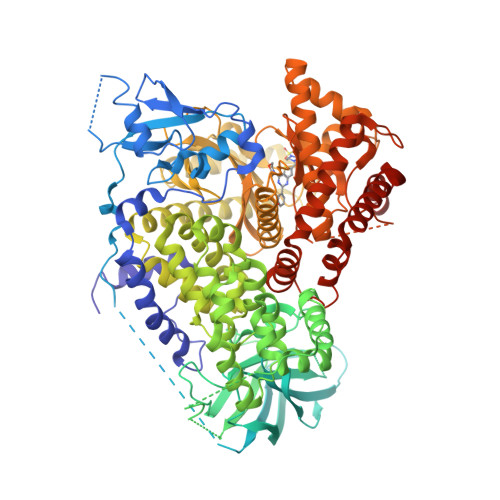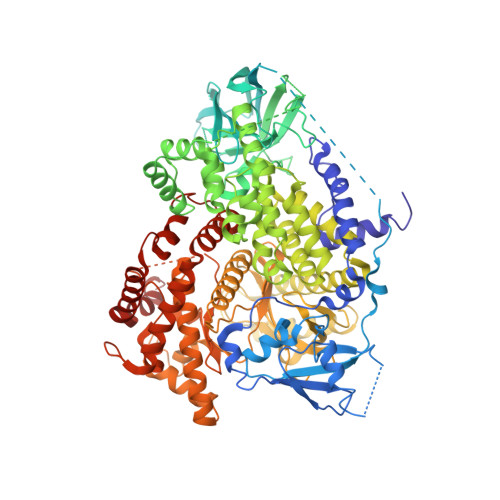Discovery of (Thienopyrimidin-2-yl)aminopyrimidines as Potent, Selective, and Orally Available Pan-PI3-Kinase and Dual Pan-PI3-Kinase/mTOR Inhibitors for the Treatment of Cancer.
Sutherlin, D.P., Sampath, D., Berry, M., Castanedo, G., Chang, Z., Chuckowree, I., Dotson, J., Folkes, A., Friedman, L., Goldsmith, R., Heffron, T., Lee, L., Lesnick, J., Lewis, C., Mathieu, S., Nonomiya, J., Olivero, A., Pang, J., Prior, W.W., Salphati, L., Sideris, S., Tian, Q., Tsui, V., Wan, N.C., Wang, S., Wiesmann, C., Wong, S., Zhu, B.Y.(2010) J Med Chem 53: 1086-1097
- PubMed: 20050669
- DOI: https://doi.org/10.1021/jm901284w
- Primary Citation of Related Structures:
3L13, 3L16, 3L17 - PubMed Abstract:
The PI3K/AKT/mTOR pathway has been shown to play an important role in cancer. Starting with compounds 1 and 2 (GDC-0941) as templates, (thienopyrimidin-2-yl)aminopyrimidines were discovered as potent inhibitors of PI3K or both PI3K and mTOR. Structural information derived from PI3K gamma-ligand cocrystal structures of 1 and 2 were used to design inhibitors that maintained potency for PI3K yet improved metabolic stability and oral bioavailability relative to 1. The addition of a single methyl group to the optimized 5 resulted in 21, which had significantly reduced potency for mTOR. The lead compounds 5 (GNE-493) and 21 (GNE-490) have good pharmacokinetic (PK) parameters, are highly selective, demonstrate knock down of pathway markers in vivo, and are efficacious in xenograft models where the PI3K pathway is deregulated. Both compounds were compared in a PI3K alpha mutated MCF7.1 xenograft model and were found to have equivalent efficacy when normalized for exposure.
Organizational Affiliation:
Genentech, Inc., 1 DNA Way, South San Francisco, California 94080, USA. sutherlin.dan@gene.com



















